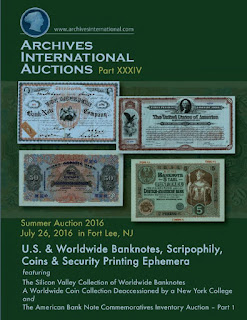Someone Else : What's that thing called again that you write about ?
Me: Scripophily !
Someone Else: Scripalcoly ?
Me: SCRI - PO - PHI - LY ! (I'm not yelling, just excessively articulating)
Me: It is similar to PHI-LA-TE-LY. (Still not yelling, still excessively articulating, but faster, philately is a known word, right?)
Someone Else: Don't know philnatalie either !
Me: Doesn't matter. It's about old bond and share certificates.
Outsiders and newcomers struggle with the specialist term we use for our hobby. That shouldn't be a surprise. What do you think of these three "collecting" terms : deltiology (postcards), tegestology (beer mats) and arctophily (teddy bears) ? By the time you have read the last one, you have forgotten already the first one (I did).
Before 1978, people referred to our hobby as the collecting of stocks and bonds. In that year The Financial Times organized a contest to choose a name. It was Arthur Howell from the UK who won the competition with the term scripophily. Suggestions from other participants included: philoscripy, promissophily, syngrahophily, philosyngraphy, bonditry and shyloxis.
In the beginning the winning term was not widely accepted at all. Today, the word has become more established thanks to the promotional efforts of collector associations, auction houses, scripophily dealers and museums.
In the beginning the winning term was not widely accepted at all. Today, the word has become more established thanks to the promotional efforts of collector associations, auction houses, scripophily dealers and museums.
Earlier this year, I launched a small poll with the question if our hobby would need another name? Here are the results, you can make your own conclusion. But if you ask me, scripophily is here to stay.
F.L.
Related links:
References
- What is the word for people who collect ..? , Oxford Dictionaries
- Philoscripy? Bonditry, Shyloxis?, The Bond & Share Society Journal, Feb 1996 (also included in the commemorative section of Scripophily magazine No 100)
- What is scripophily ?




